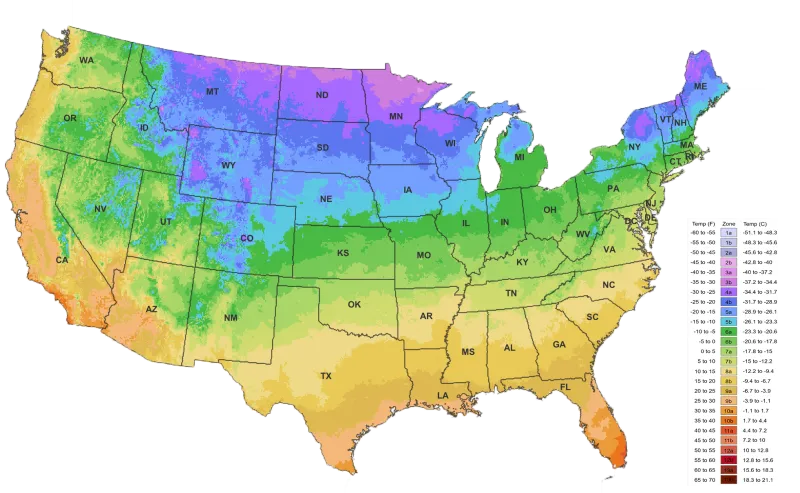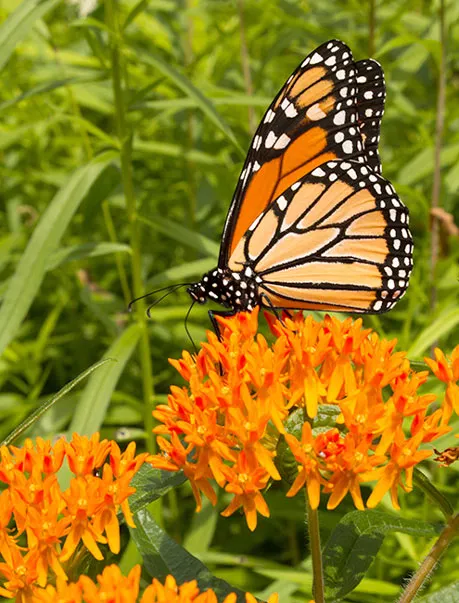Asclepias tuberosa
The USDA Plant Hardiness Zone Map is the standard by which gardeners and growers can determine which plants are most likely to thrive at a location. The map is based on the average annual minimum winter temperature, divided into 10-degree F zones.

5a (−20 °F to −15 °F)
5b (−15 °F to −10 °F)
6a (−10 °F to −5 °F)
6b (−5 °F to 0 °F)
7a (0 °F to 5 °F)
7b (5 °F to 10 °F)
8a (10 °F to 15 °F)
8b (15 °F to 20 °F)
9a (20 °F to 25 °F)
9b (25 °F to 30 °F)
Endangered Status
- Near Threatened (NT)

